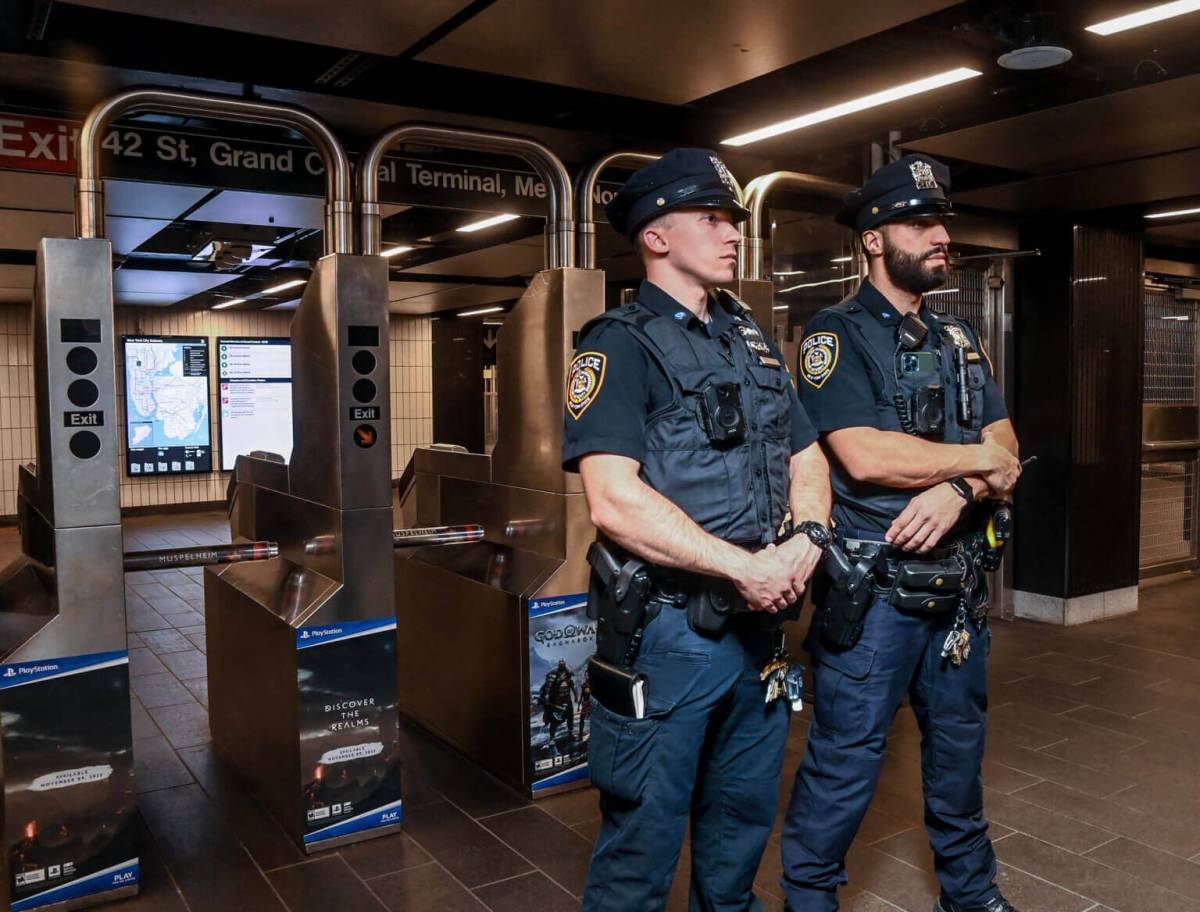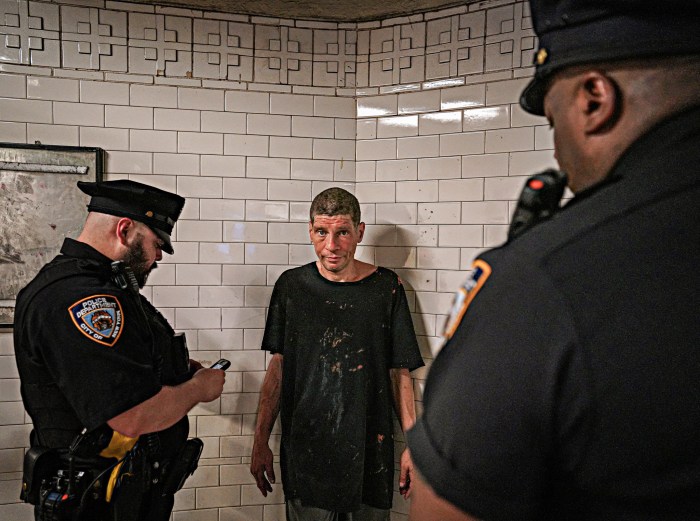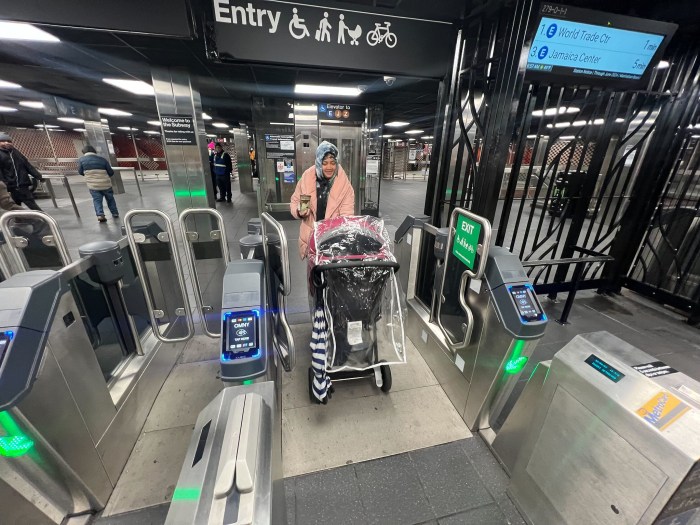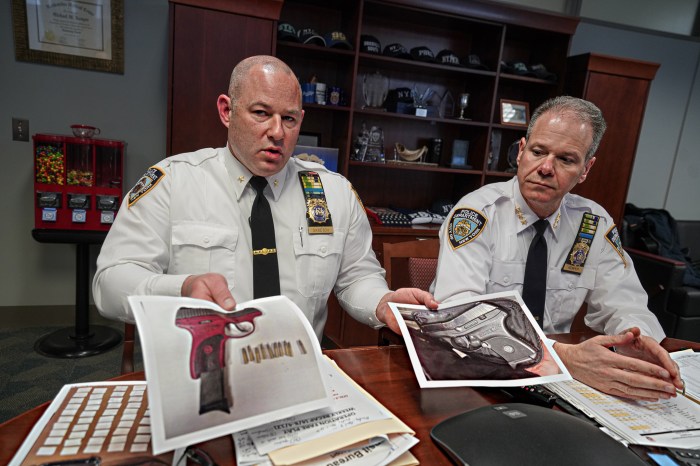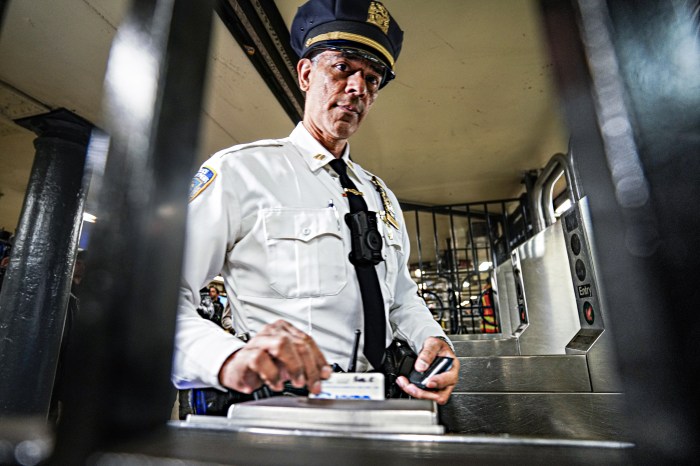Law enforcement issued 80% more summonses throughout the New York City Transit system during the first three months of 2023 compared to the same period last year — a considerable increase as the MTA seeks to deter fare evasion in the system.
The MTA’s Transit Adjudication Bureau, which processes summonses handed out for violations of the MTA rules of conduct, reported over the weekend that police and civilian inspectors issued 54,692 summonses in the subway system and on buses in the first quarter of 2023, compared to 30,382 in the first quarter of 2022. The majority of the summonses were for fare evasion, according to data published by the authority.
Accordingly, the MTA collected 66.8% more revenue from summonses this year compared to last — bringing in $3,353,234 to agency coffers. Surplus revenue compared to expenses increased by 107% to $2,265,496.
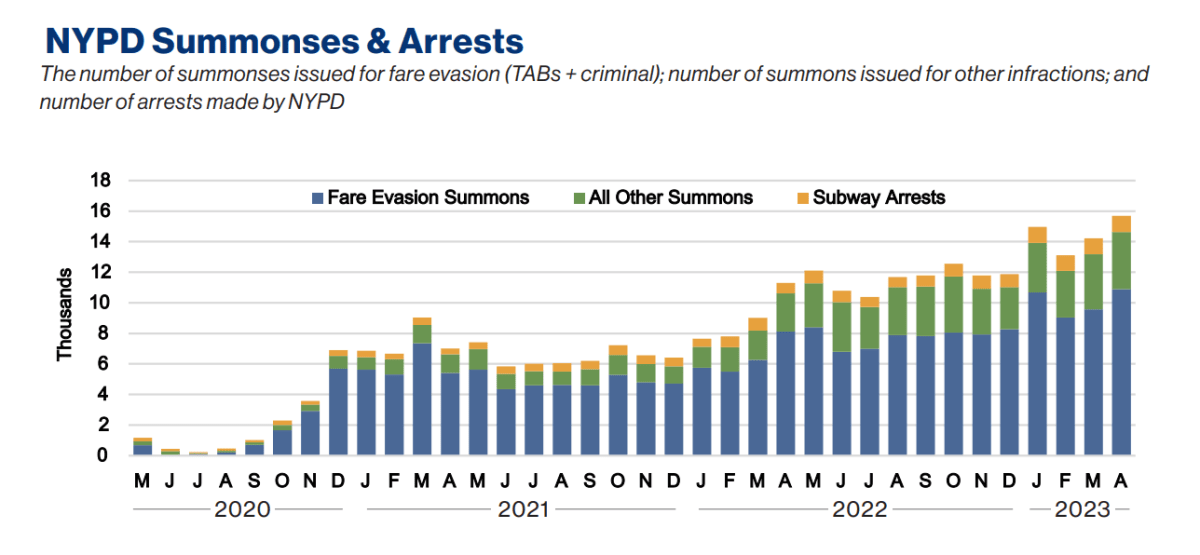
The news comes just days after the MTA released a long-awaited report estimating it lost nearly $700 million to fare and toll evasion in 2022, a number that has grown to “crisis levels” since the onset of the COVID-19 pandemic. About 37% of bus riders and 13.5% of subway riders are estimated to skip the $2.75 fare on any given day.
The “blue ribbon” report recommended redesigning fare gates to be more difficult to cross without paying and expanding benefits like Fair Fares for low-income riders.
Notably, the panel also recommended that the MTA shift to civilian enforcement for most fare evasion cases, and by extension keep armed police out of the equation. In the past year, the agency has deployed unarmed, private security contractors to guard fare arrays to deter turnstile hopping, and it plans to expand civilian “Eagle” teams that can write $100 fare evasion tickets on buses. The panel has also recommended shifting to a model of warning evaders the first time they’re caught, instead of immediately issuing a summons.
But officially, the report’s recommendations are only just that. Last week, when asked if he would tell the NYPD to “back off” on its beefed-up fare evasion policing given the report’s findings, MTA Chair and CEO Janno Lieber pointedly declined to do so, saying both he and Transit Bureau Chief Michael Kemper still had to review the 124-page document.
“At this point, I think what we need to do is give the NYPD an opportunity to review the report,” Lieber told reporters at Grand Central Terminal on Wednesday. “And then we’ll have further dialogue on how they’re gonna implement some of these ideas and we’re gonna work together.”
The NYPD has considerably beefed up its presence in the subway system over the past year after a series of high-profile crimes on the rails, including the shoving death of Michelle Go last January and the April 2022 N train mass shooting in Brooklyn. In October, Governor Kathy Hochul and Mayor Eric Adams announced a strategy of establishing an “omnipresence” of cops in the system by funding hundreds of additional overtime hours daily; the MTA has touted decreased major crime rates in the months since.
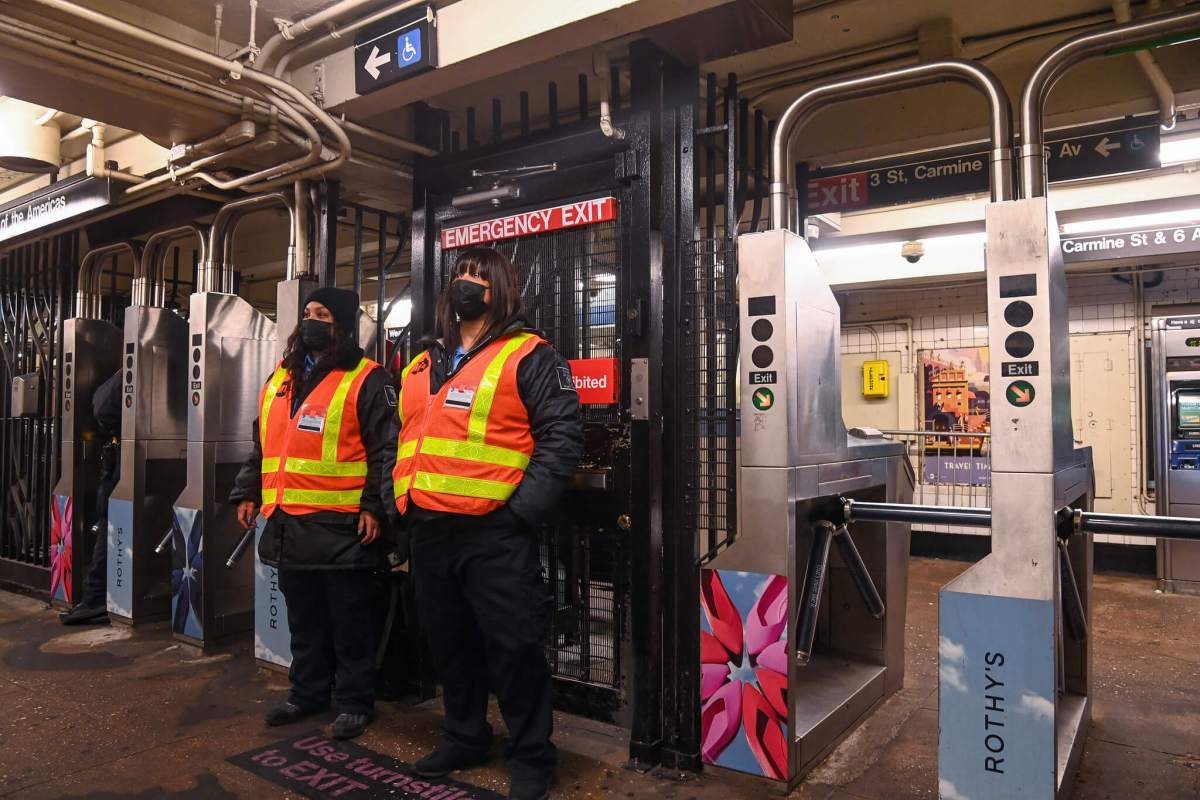
The MTA’s approach to fare evasion has often been criticized over the years as excessively punitive compared to the amount of revenue lost with each vault over the turnstile or mosey through the exit gate. Enforcement is also applied at a highly disproportionate against Black and Latino riders: in the fourth quarter of last year, 93% of arrests and 66% of summonses for fare evasion were against Black or Latino riders, well above those groups’ proportion of the city population. First-quarter data on the racial breakdown of enforcement is not yet available.
The Blue Ribbon report recommended “reducing the well-documented impact of fare evasion enforcement on New Yorkers of color” by distributing enforcement efforts more evenly across the city. Presently, many of the stations with the highest levels of fare evasion enforcement are situated in low-income neighborhoods of color.
The risk of a summons or arrest should be just as great for evasion on the Upper East Side as it is in East New York,” reads the report.
The station with the highest number of summonses in the fourth quarter of 2022 was Jay Street-MetroTech in Downtown Brooklyn; the most arrests took place at Broadway Junction in East New York. Both stations are linked by the A and C trains.
While fare evasion summonses were the lion’s share of collars, it wasn’t the only category for which New Yorkers got tickets. Other violations of the New York City Transit code of conduct include smoking, littering, spitting, or relieving oneself in the system, as well as wheeling large carts, making excessive noise, and spending more than an hour in a station’s fare zone. The MTA could not immediately provide an exact breakdown of the summonses.



